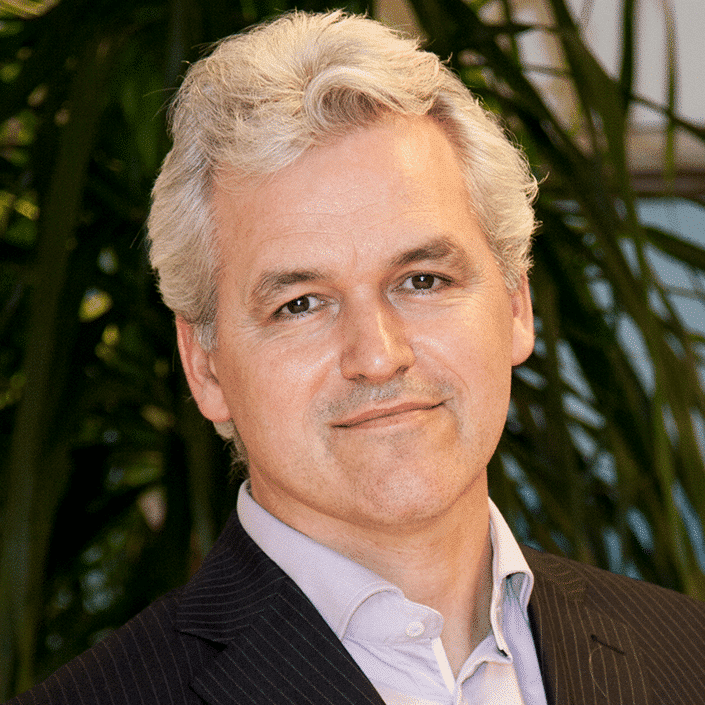During the development of the body of knowledge of the ROUNDMAP™ 4-dimensional framework, we found that existing words or concepts ─ often originating from a 2D/3D world ─ did not cover our 4D perception while more contemporary concepts needed more elaboration. So, we decided to develop our own book of reference (also called a lexicon or thesaurus).
After both the customer as well as the company has commited themselve to an exchange of value (a purchase) they enter into an Understanding of Trust™, compeling the company to deliver on its promise.
If the company succeeds in its mission, by satisfying the needs of the customer, meeting their expectations, and creating a perception of future value, the relationship may develop into an Alliance of Trust™.
BMX™ is separate framework in which we’ve mapped four foundational business models, i.e., Product Centricity, Customer Centricity, Resource Centricity, and Network Centricity, in a two-by-two matrix.
We also linked these foundational business models to Tracy & Wiersema’s Value Discipline framework, while adding a fourth dimension, Network Orchestration.
References: + Business Model Matrix
According to John P. Kotter “Any company that has made it past the start-up stage is optimized for efficiency rather than for strategic agility. The very structure we have created to operate efficiently and effectively today gets in the way of what we need to do to innovate for tomorrow.”
Growth has a natural tendency to decline, unless we manage to extend it, through adaptations or innovations, or endure it, by transforming the business. ROUNDMAP provides serveral insights into how to shift or regenerate a business model, or respond to disruption.
We’re developing the Business Model Compass™ into a canvas-like tool.
A four-step framework, originally identified by Steve Blank, to discover and validate that you have identified a need(s) that customers have, have built the right product to satisfy that customer’s need(s), tested the correct methods for acquiring and converting customers, and deployed the right resources in the organization to meet the demand for the product.
References: + Steve Blank
We coined the phrase in 2014 when we needed to describe the fourth step in the customer development process: customer acquisition, customer creation, customer retention, and .. customer extension.
Customer Extension focuses on organizing customer behavior to get customers to return more often and spend more over the course of their customer lifetime.
Compare: A product extension in the computer software business could be an upgrade or revision, and other possible product extensions are product repositionings and additions to existing products. Or a brand extension, pointing to using the samen brand name in a different product category (spin-off).
All economic growth comes from the process of ‘creative destruction’, as stated by economist Joseph Schumpeter, which he and others described as ‘business cycles’.
We created a model to describe how technological innovation disrupts existing technology, leading to social disruption of incumbents, and ultimately, requires social innovation.
To help critically assess the customer’s business in a way the customer hasn’t fully appreciated on their own, and help them identify new ways to grow, to make money, to save money. Allowing you to build a business case and articulating a business case to your customers for why they need not buy your solution, but why they need to change their behavior in a way that’s going to improve their business.
References: + Gartner Research
The leverage that occurs from a customer-centric business model, implying a focus on a select group of customers ─ typically 15% ─ for which you are able to fulfill more of their needs and as a result are likely to spend more with you ─ expressed by their Customer Lifetime Value or CLV. Additionally, research confirms that it costs five times as much to acquire new customers than to grow revenue from your existing customer base.
References: + Infographic customer retention, + Book Customer Centricity
The cost advantages that enterprises obtain due to their scale of operation, with cost per unit of output decreasing with increasing scale. At the basis of economies of scale there may be technical, statistical, organizational or related factors to the degree of market control.
References: + Investopedia
What made us create the ROUNDMAP™ can be captured in one word: EQuitability. It means being fair, just, and honest. We believe businesses have a social responsibility to their stakeholders, which may include employees, customers, patients, viewers, fans, shareholders, animals, and nature. Profit is good, if good is done.
We are strong advocates of EQuitable Growth: growth aspirations that do not extent beyond what could reasonably be perceived as honest, fair, and just towards the company’s stakeholders.
Experts use a Gap Analysis to examine the gap between the current growth rate and aspired growth. Provided that the growth goals are achievable, closing the growth gap often involves examining a series of gaps that could occur throughout the business operations.
A growth gap is a revenue shortfall that challenges the organization to consider its growth aspirations, to assess the current growth activation initiatives, to fix hidden gaps and to create new growth.
The Growth Gap ─ the gap between aspired growth and current growth ─ may be related to inadequate considerations of the opportunities (attainability), the capacity or capability of the organizational infrastructure to support successful execution (serviceability), adversarial forces inside or outside the organization (Porter’s Five Forces), or caused by a series of hidden gaps througout the enire operation. To understand what causes the growth gap an extensive examination may be needed.
Organizational Change is a part of Organizational Development (OD). Organizational Development perceives organizations as complex systems that are constantly in need of change and improvement.
Organizations are made up of various organizational units (i.e., divisions, functions, sub-teams within a function) and people in these units perform roles, responsibilities and work processes that often cut across these units to deliver a solution or product to a customer.
- Thus, the quality & effectiveness of your team members’ communication, collaboration and trust is critically important. Their relationships and the ability to work together matter significantly.
- Therefore, positively changing your team member relationships, and their communication, collaboration, and trust levels are essential for task and process execution.
- Building high performance teamwork and stronger competencies for emotional and social intelligence can dramatically increase team awareness & performance, so that your work processes and the key organizational areas for change & improvement you identified can be transformed to a higher level of functioning.
- When an integral change intervention builds increased teamwork & collaboration and focuses that intervention on the key change areas, then your desired organizational changes are created by the team members themselves, which builds their confidence and capacity to handle more change.
- Yet, in organizational change efforts and team development efforts, the self change is by far the most overlooked area to create positive organizational change.
A purchase isn’t just a sale, it is the Moment of Commitment™ in which both parties, buyer and seller, commit to the exchange of the anticipated value for money. A purchase should never be perceived as an end, rather the start of a relationship of trust and to make sure that the actual or perceived value ─ from promises made during the acquisition stage ─ is delivered and that the customer can genuinely experience, consume, or utilize that value.
The Growth Gap ─ the gap between your firm’s growth aspiration and growth activation ─ may be related to inadequate considerations of the opportunities (attainability), the capacity or capability of the organizational infrastructure to support successful execution (serviceability), or adversarial forces inside or outside the organization (Porter’s Five Forces).
To understand what causes the growth gap in your situation, you’ll need to assess the entire operation.
We are strong advocates of EQuitable Growth: growth that is fair and just to a firm’s stakeholders ─ directors, employees, customers, environment, community, government, financers, creditors, suppliers, and shareholders.
Organizational culture is often summed up as ‘the way we do things around here’. It is displayed in mission statements, or on posters found throughout the building containing the corporate values.
However, as explained by Edgar H. Schein, a Professor Emeritus at the MIT Sloan School of Management, culture is much more complex.
He believes that ‘culture is the accumulated learning that you’ve had in your group experience’. It comes from situational awareness, or the ‘mindfulness’ toward the situation we’re in. Each culture (your nation, organization, occupation, team, or family) is a layer of your consciousness.
Among other things, in his book Organizational Culture and Leadership, Schein suggests to consider three aspects of culture:
- “Cultural artifacts” — Things or processes that represent the culture but are not the culture. For example, The Zebra has pillows that say, “Express Gratitude”. More impactfully, the weekly leadership meeting begins with everyone saying something they are grateful for that week. In a similar way, executives of IBM once sung Hail to the IBM, an anthem dedicated to T.J. Watson.
- “Espoused values” — The values that the organization says are their values and culture. As you might expect, The Zebra includes “Express gratitude” among their espoused values.
- “Underlying assumptions” — This is what’s behind the values. In our current example, The Zebra has an underlying assumption that employees should be grateful for the work they do and the people they work with, and that they shouldn’t take it for granted.
Schein argues that misalignment on organizational values cause poor operational performance, especially when values are misinterpreted.
One company used the term ‘Be Scrappy’ as one of its core values. Scrappiness means acting decisively. However, to one person this meant ‘cutting corners and don’t care too much about quality.’ To the other, it sounded like ‘be resourceful’. It isn’t hard to see that these different interpretations aren’t helpful.
One final note on Ed Schein’s work is that culture and leadership are ultimately about relationships. It isn’t about individuals, whether they are talented or not, or even how well they are performing: it is about the situation they are in. Becoming aware of the situation, or in fact, master the situation, is what drives performance.
This understanding, that work should inherently be more relational (team effectiveness) and less transactional (individual performance) is what defines Schein’s work related to Humble Inquiry.
The third Essential Business Model™ of the Business Model Matrix™, based on a service-driven resource that meets a certain customer’s need, and then trying to get as much of that resource utilized. Success is measured by the average percentage of the maximum capacity used over a period of time. In competitive terms, this would represent a share of utilization.
With a 97% brand awareness, Denny’s is a household name for restaurants in the US. The 65 year old brand was a digital laggard but managed to transform itself into a digital-aware business: “Our goal was to not only get our relevance back, but to become significant again in the lives of consumers.”
Relevance is about catching a prospective customer in the moment as they are looking to fulfill a want or need. Significance is about forging a strong relationship with a customer driven by the meaning attached to the brand or some other perception of future value.
References: Story of Denny’s
This is what Tim O’Reilly, publisher, author, and venture capitalist has to say on recent change:
“Every successful organization has to make the transition from a world defined primarily by repetition to one primarily defined by change. This is the biggest transformation in the structure of how humans work together since the Agricultural Revolution.”
That’s a pretty bold statement.
It inspired us to develop ROUNDMAP’s System of Change™, an Integral Approach to Change Management.
The ROUNDMAP™ System of Change™ contains four elements:
- The Change Map ─ Leading to a Change Action Plan (CAP)
- The Four Pillars of Change (4iDs)
- The Change Circles™
- The Triad of Integral Change
After a customer has commited to a purchase ─ the exchange of value for money ─ he/she enters an Understanding of Trust™.
Author
-
Edwin Korver is a polymath celebrated for his mastery of systems thinking and integral philosophy, particularly in intricate business transformations. His company, CROSS/SILO, embodies his unwavering belief in the interdependence of stakeholders and the pivotal role of value creation in fostering growth, complemented by the power of storytelling to convey that value. Edwin pioneered the RoundMap®, an all-encompassing business framework. He envisions a future where business harmonizes profit with compassion, common sense, and EQuitability, a vision he explores further in his forthcoming book, "Leading from the Whole."
View all posts Creator of RoundMap® | CEO, CROSS-SILO.COM







